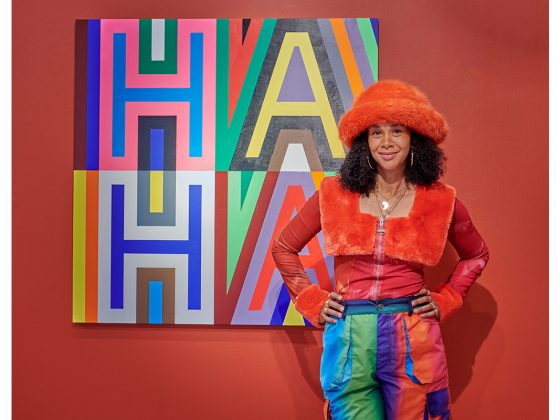PHOEBE HUI
THE MOON IS LEAVING US

Phoebe Hui
Audemars Piguet Art Commission 2021.
©Courtesy: Audermars Piguet
Le Brassus – Audemars Piguet Contemporary was delighted to unveil the 5th Audemars Piguet Art Commission by Hong Kong-based multidisciplinary artist Phoebe Hui in the Duplex Studio at Tai Kwun, Centre for Heritage and Arts, Hong Kong from 25 April – 23 May 2021, concluding with Art Basel in Hong Kong. The large-scale, site-specific installation titled The Moon is Leaving Us was conceived and realised by Hui in collaboration with guest curator Ying Kwok, with the support of Audemars Piguet Contemporary curator Audrey Teichmann. The artwork explores historical and contemporary observations of the Moon in an effort to re-examine our relationship with it and embrace new perspectives on science through contemporary art. The Moon is Leaving Us is on view by invitation only due to COVID-19 until 23 May 2021. It is publicly accessible through a virtual exhibition tour and digital curator walk-throughs.

Phoebe Hui
Audemars Piguet Art Commission 2021
©Courtesy: Audermars Piguet
Hui has long been drawn to the Moon as a subject matter, intrigued by its many complexities. On a visit to Audemars Piguet’s headquarters in Le Brassus in 2019, the artist experienced a Full Moon while taking an evening walk. The moonlight’s pronounced reflection off the snowy slopes stuck with the artist and on her return to Hong Kong, she began to research the celestial body. She discovered an important fact which became the basis for her artwork: the Moon is slowly migrating away from the Earth at a speed of 3.78 cm per year, the same speed it takes for our fingernails to grow. Hui, realizing this impact will not be seen in our lifetimes, embarked on a journey into the visible and invisible aspects of the Moon.

Phoebe Hui
Audemars Piguet Art Commission 2021
©Courtesy: Audermars Piguet
The large-scale multi-room installation at Tai Kwun primarily consists of two major artworks: Selenite, which takes its name from the scientific novel The First Men in the Moon by Herbert George Wells; and Selena, meaning “Moon” in Greek.

Phoebe Hui
Audemars Piguet Art Commission 2021.
©Courtesy: Audermars Piguet
Viewers are introduced to Selenite – a mechanical kinetic robot that is the room’s principal source of light – upon entering the main atrium of the Duplex Studio. Selenite boasts 48 mechanical arms, arranged in a parabolic shape. Affixed to each arm is a screen, onto which fragmented images of the Moon are projected, ranging from historic drawings to visuals from NASA’s and other online open-source data. The screens are overlaid with polarisers which only show a partial view of the lunar images. A team of engineers at Force Dimension, a leading innovator in high precision haptics technology who Audemars Piguet Contemporary introduced to the artist, shared their knowledge and expertise with Hui throughout her mechanical programming of Selenite. The large-scale sculpture presents viewers with a lunar visualisation that is rarely whole, a nod to the fact that society is kept informed about nature in a disjointed manner, one that is mediated by technological instruments.

Phoebe Hui
Audemars Piguet Art Commission 2021.
©Courtesy: Audermars Piguet
The visitor journey continues upstairs. Selena, a hand-built machine programmed by Hui which produces one-of-a-kind ink drawings of the Moon’s visible and invisible sides, is situated in the artist’s Research Room along with objects used throughout the development of the installation. Hui came to deeply understand during her research-based process how we as humans have an incomplete understanding of the Moon because its visual identity is mediated by instruments and therefore subjective. A conversation with a former astronaut solidified her understanding. She investigated how the Moon has historically been represented, accessing online records including the first book to include a detailed map of the Moon, the 1647 edition of Selenographia, sive Lunae descriptio by astronomer Johannes Hevelius. This, coupled with contemporary observations of the Moon, inspired the draw-bot Selena, which was built using re-appropriated fine art tools, including a canvas frame and parts from an easel.

Phoebe Hui
Audemars Piguet Art Commission 2021
©Courtesy: Audermars Piguet
While the intricacies of each of Selena’s drawings are based on the latest open-source data from NASA, the drawings are made to appear at the hand of Hevelius. It takes five to seven days for Selena’s computer to run its programme, which interprets 138 million parameters from each original NASA image and an additional twelve to fourteen hours to complete a single Moon drawing. Four pairs of Moon drawings created by Selena, including one of Earth overlaid with the Moon’s shadow, hang within the space showing two opposing views back-to-back.
“I hope that the installation is a chance for audiences to meditate on their relationship with the Moon. I have aspired to transform the space we are occupying at Tai Kwun into an urban sanctuary for audiences to explore, reflect, build, or re-build their relationships with our Universe.”
Phoebe Hui – Contemporary Artist

Phoebe Hui
Audemars Piguet Art Commission 2021.
©Courtesy: Audermars Piguet













